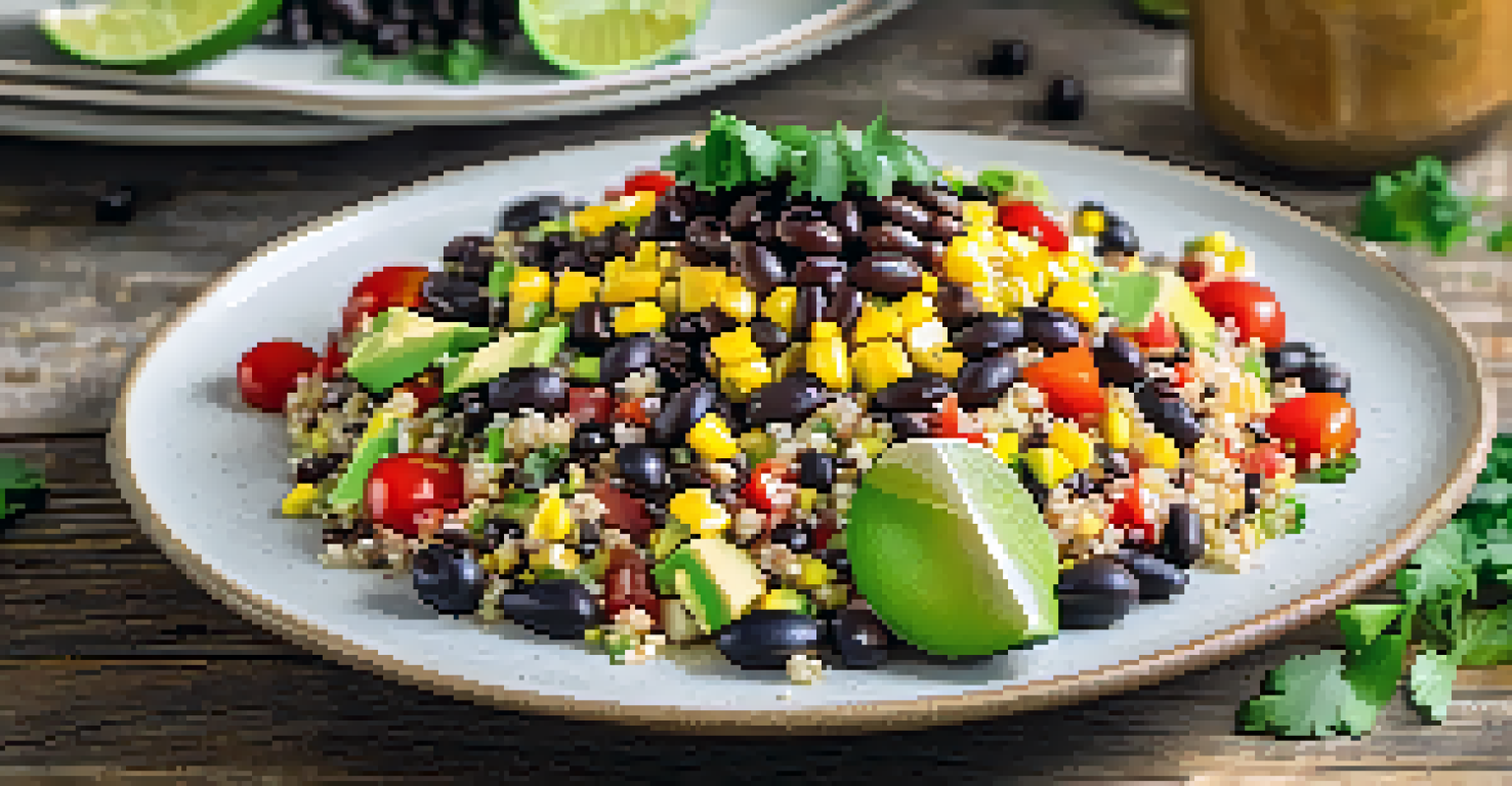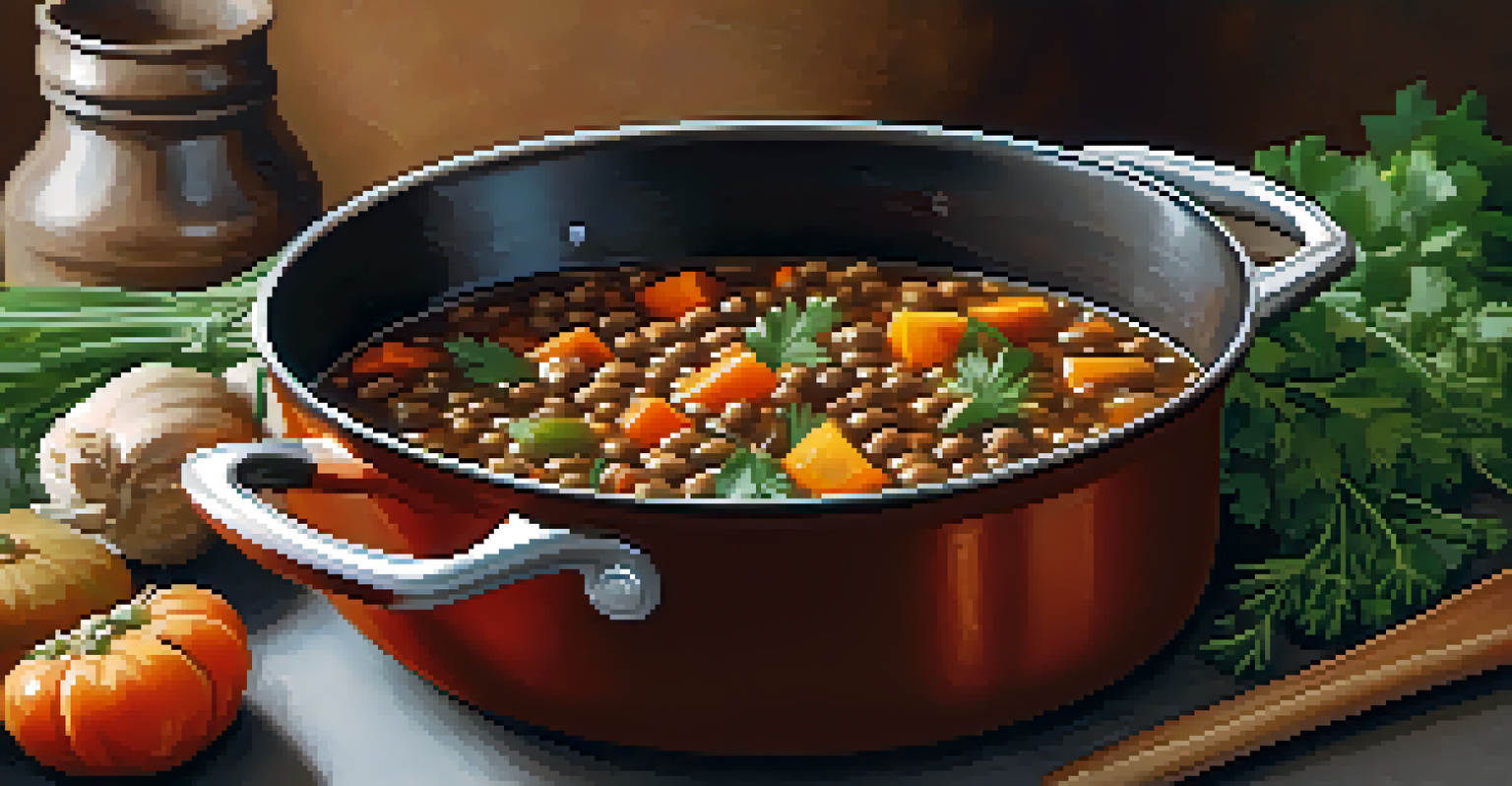Whole Food Plant-Based Diet: A Healthier Vegan Option

Understanding the Whole Food Plant-Based Diet
A whole food plant-based (WFPB) diet focuses on foods that are unprocessed and derived from plants. This means whole grains, fruits, vegetables, legumes, and nuts take center stage, while processed foods and animal products are minimized or eliminated. The idea is to fuel your body with nutrient-dense foods that promote optimal health.
Let food be thy medicine and medicine be thy food.
Unlike a standard vegan diet, which can include many processed foods, a WFPB diet emphasizes eating foods in their most natural state. For example, instead of consuming plant-based burgers made from soy protein isolate, you’d enjoy lentils or chickpeas. This approach helps people not only avoid unhealthy additives but also encourages a more wholesome way of eating.
Many people are surprised to learn that a WFPB diet can be both satisfying and delicious. By focusing on whole foods, you can create vibrant, flavorful meals that nourish your body. Think hearty vegetable stews, colorful grain bowls, and fresh salads bursting with flavor—there's no shortage of variety!
Health Benefits of a Whole Food Plant-Based Diet
Research shows that adopting a WFPB diet can lead to numerous health benefits. For starters, it may help reduce the risk of chronic diseases such as heart disease, diabetes, and certain cancers. This is largely attributed to the high levels of antioxidants, fiber, and essential nutrients found in whole plant foods.

Moreover, individuals often experience improved digestion and weight management when they switch to a WFPB diet. The fiber in fruits, vegetables, and whole grains aids in digestion and keeps you feeling full longer, which can prevent overeating. Ultimately, this contributes to a healthier lifestyle and better overall well-being.
WFPB Diet Focuses on Whole Foods
A whole food plant-based diet emphasizes unprocessed, plant-derived foods to promote optimal health.
It's also worth noting that a WFPB diet can support mental health. Studies indicate that diets rich in fruits and vegetables can enhance mood and cognitive function. When you nourish your body with wholesome foods, you're not just feeding your physical health; you're nurturing your mental wellness too.
Common Misconceptions About WFPB Diets
One of the biggest misconceptions about a WFPB diet is that it lacks protein. In reality, there are plenty of plant-based sources of protein, such as beans, lentils, quinoa, and nuts. When combined correctly, these foods can provide all the essential amino acids your body needs to thrive.
Eating a plant-based diet is not just a diet but a way of life that can lead to a healthier future for ourselves and our planet.
Another myth is that a WFPB diet is boring or restrictive. On the contrary, the variety of whole foods available allows for endless culinary creativity. You can experiment with different cuisines, flavors, and preparations to keep your meals exciting and satisfying.
Finally, some people believe that adopting a WFPB diet requires drastic lifestyle changes. While significant changes can be beneficial, even small shifts towards whole foods can make a big difference. Start by incorporating more fruits and vegetables into your meals, and gradually reduce processed foods over time.
Transitioning to a Whole Food Plant-Based Diet
Making the shift to a WFPB diet doesn't have to be overwhelming. A great way to start is by gradually replacing processed foods with whole foods you enjoy. For instance, if you love pasta, try whole grain or legume-based pasta with a homemade tomato sauce loaded with veggies.
Planning your meals can also ease this transition. Spend some time each week creating a menu that includes whole foods, and prepare your meals in advance. This not only saves time but also helps you stick to your goals and avoid the temptation of convenience foods.
Health Benefits of WFPB Eating
Adopting a WFPB diet can reduce the risk of chronic diseases and improve digestion and mental well-being.
Lastly, don't forget to be patient with yourself. Transitioning to a WFPB diet is a journey, not a race. Celebrate your progress and remember that every small step towards healthier eating is a victory worth acknowledging.
Key Foods to Include in a WFPB Diet
When following a WFPB diet, certain foods should become staples in your kitchen. Think about stocking up on whole grains like brown rice, quinoa, and oats, which provide essential nutrients and energy. These grains can serve as a hearty base for many meals.
Next, incorporate a variety of fruits and vegetables. Aim for a colorful selection to ensure you're getting a range of vitamins and minerals. Dark leafy greens, berries, and cruciferous vegetables like broccoli and cauliflower are particularly nutrient-rich and beneficial for health.
Don’t forget about legumes! Beans, lentils, and peas are fantastic sources of protein and fiber, making them an excellent choice for any meal. They can be added to salads, soups, or even blended into dips, offering versatility and nutrition.
Delicious WFPB Recipes to Try
A whole food plant-based diet doesn't mean sacrificing flavor. For a quick and easy meal, try a quinoa salad with black beans, corn, diced tomatoes, and avocado, drizzled with lime juice. It's refreshing, filling, and packed with nutrients!
For a cozy dinner, consider a hearty vegetable lentil stew simmered with herbs and spices. This warming dish is perfect for chilly nights and provides a comforting way to enjoy whole foods while nourishing your body.
Transitioning Is a Gradual Process
Making small, manageable changes toward a WFPB diet can lead to significant health improvements over time.
And for dessert, why not whip up some banana oat cookies? Simply mash ripe bananas and mix them with oats and any add-ins like nuts or dark chocolate chips. These cookies are naturally sweet, satisfying, and guilt-free!
The Future of Whole Food Plant-Based Eating
As more people become aware of the health benefits associated with whole food plant-based diets, this trend is likely to continue growing. The increasing availability of whole food options in grocery stores and restaurants makes it easier for consumers to make healthier choices.
Additionally, as research continues to highlight the positive impacts of WFPB eating on health, the movement toward plant-based living will gain momentum. More health professionals are advocating for this lifestyle as a preventive measure against chronic diseases.

Ultimately, adopting a WFPB diet isn't just about personal health; it's also about contributing to a more sustainable food system. By choosing whole plant foods, you're supporting practices that are kinder to our planet, making this diet not only a personal choice but a global one.